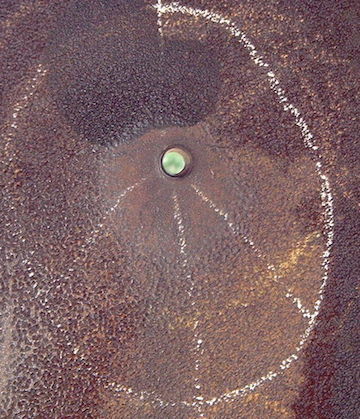Pie is Everywhere
 A bullet is formed by revolving the area bounded by the the curve
from
to
about the
-axis.
A bullet is formed by revolving the area bounded by the the curve
from
to
about the
-axis.
It is then shot straight into a very thick wall (i.e. it does not pierce through the other side at all) making a closed cylindrical hole until it stops moving. Then the bullet is carefully extracted without affecting the hole at all, leaving an empty hole with a pointy end where the bullet once was.
The length of the entire hole is . If the volume of the hole can be expressed as where is a constant, find the value of .
The answer is 1.
This section requires Javascript.
You are seeing this because something didn't load right. We suggest you, (a) try
refreshing the page, (b) enabling javascript if it is disabled on your browser and,
finally, (c)
loading the
non-javascript version of this page
. We're sorry about the hassle.
The radius of the base of the bullet is ln ( e ) = 1 and its length is e − 1 . So since the length of the entire hole is e + 1 , the volume of the hole is the volume of the bullet plus the volume of a cylinder of length 2 and radius 1 .
The volume of the cylindrical part of the hole is then 2 π , and the volume of the bullet is
∫ 1 e π ( ln ( x ) ) 2 d x .
We can solve this integral using the parts method. Let u = ( ln ( x ) ) 2 and d v = d x . Then d u = 2 x ln ( x ) d x and v = x , and the integral then becomes, (ignoring the bounds for the moment),
π x ( ln ( x ) ) 2 − 2 π ∫ ln ( x ) d x = π x ( ln ( x ) ) 2 − 2 π ( x ln ( x ) − x ) =
π x ( ( ln ( x ) ) 2 − 2 ln ( x ) + 2 ) ,
where another application of the parts method was used to determine ∫ ln ( x ) d x . Evaluating this from x = 1 to x = e gives us a volume of
π e ∗ ( 1 − 2 + 2 ) − π ∗ ( 0 − 0 + 2 ) = π ( e − 2 ) .
Adding to this the volume of the cylindrical part of the hole gives us a total volume of e π , implying that the constant i = 1 .